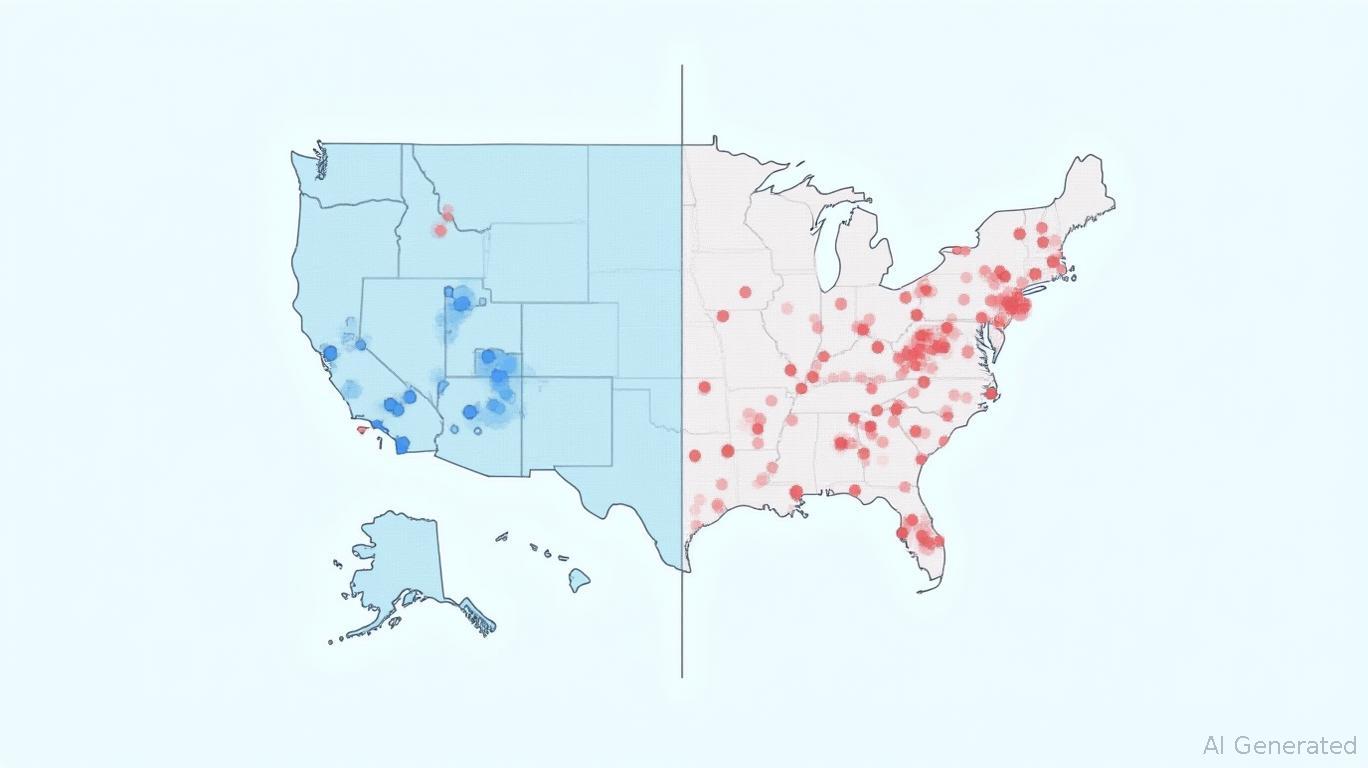Uber's EV Transition: Bridging Infrastructure Gaps to Secure Sustainability and Equity
The race to electrify ride-hailing is fraught with challenges, but none more critical than the uneven rollout of EV charging infrastructure. For
, achieving its 2030 goal of 100% zero-emission rides in major markets hinges on addressing stark disparities in charging availability, cost, and reliability—factors that threaten both driver equity and the company's climate commitments. Let's dissect the roadblocks and opportunities shaping this pivotal transition.The Infrastructure Divide: A Tale of Two Continents
Europe leads in charging density, with the Netherlands boasting over 180,000 public chargers by 2024—more than Germany and France combined. The EU's Alternative Fuels Infrastructure Regulation (AFIR) mandates fast chargers (≥150 kW) every 60 km on major highways by 2025, a policy that has spurred 35% growth in public stations since 2022. In contrast, the U.S. lags with just ~200,000 chargers nationwide, and only 35% of interstates have stations within 50 miles.

Why It Matters for Uber Drivers:
- In urban DACs (disadvantaged communities), drivers face 64% fewer chargers per capita than wealthier areas, and 73% fewer if they rent in multi-dwelling units.
- Reliability is a recurring issue: 47% of negative reviews cite hardware failures like malfunctioning card readers or incompatible plugs, disproportionately affecting DAC drivers reliant on public chargers.
Pricing Disparities: A Double Burden for Marginalized Drivers
While only 5% of users cite cost as a major barrier, DAC residents—already spending 18% of their income on transportation—are disproportionately hit by charging fees. For example, public chargers in urban U.S. DACs often cost $0.30–0.50/kWh, versus $0.15–0.20/kWh at home stations. Without subsidies, these costs could deter EV adoption among drivers who cannot afford home charging.
The Equity Catch-22:
- DACs need more DC fast chargers (18% of U.S. infrastructure) to compensate for limited home access, but grid upgrades to support them are costly and underfunded.
- Semi-public chargers (e.g., hotel-specific stations) account for 20% of European infrastructure, excluding non-customers and deepening inequity.
Sustainability at Risk: When Gaps Derail Goals
Uber's 2030 target relies on 4–5x faster EV adoption among drivers than the general population. Yet in the U.S., only 25% of rides in DACs are EV-powered—half the rate in European cities like Oslo. The “chicken-and-egg” dilemma persists: drivers won't buy EVs without reliable charging, but infrastructure won't expand without demand.
Grid Challenges:
- Megawatt chargers (e.g., BYD's 1 MW systems) require grid upgrades costing up to $50,000 per station, deterring deployment in low-income areas.
- Power outages, common in DACs, further disrupt charging reliability.
Opportunities in the Gaps
Despite these hurdles, the EV transition presents $1.5 trillion in global infrastructure investment opportunities by 2030. Here's where investors can capitalize:
- Ultra-Fast Chargers:
- Companies like ChargePoint (CHPT) and EVgo (EVGO) are expanding DC fast networks, with EVgo's stations growing 25% in 2024.
- EVGO, UBER Closing Price
Policy-Driven Growth:
The EU's AFIR and China's 12-million-charger target by 2030 will fuel demand for grid tech firms like XENON (XNN), which provide virtual grid expansion solutions.
Equity-Focused Solutions:
- Subsidized charging programs (e.g., NYC's “ChargeNYC” for DACs) reduce costs, while standardized plugs and open networks (vs. Tesla's closed system) improve accessibility.
Investment Strategy: Play the Infrastructure Playbook
- Short-Term: Bet on charging hardware/software stocks (CHPT, EVGO) as governments ramp up spending.
- Long-Term: Look to grid resilience firms (XNN) and EV battery innovators (CATL, BYD) enabling faster, cheaper charging.
- Avoid: Uber (UBER) if it fails to partner aggressively with charging networks—its stock could drop 20–30% if EV adoption stalls in key markets.
Conclusion
Uber's EV future isn't just about swapping combustion engines for batteries; it's about building an equitable, reliable infrastructure backbone. Investors who back the companies solving regional gaps and pricing inequities will position themselves to profit as the world's largest ride-hailing firm navigates this pivotal transition. The road ahead is bumpy, but the payoff for those who fill the potholes? Priceless.

Comments
No comments yet